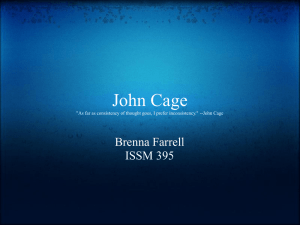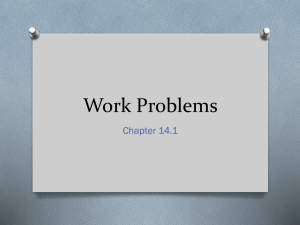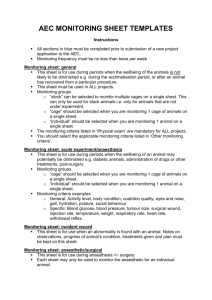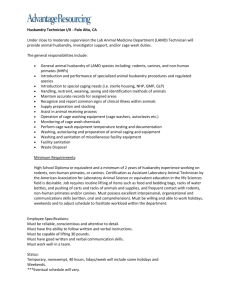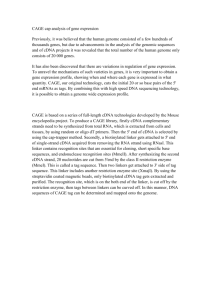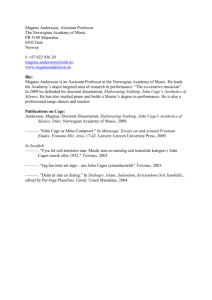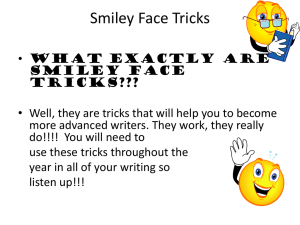EOG Moments 4
advertisement
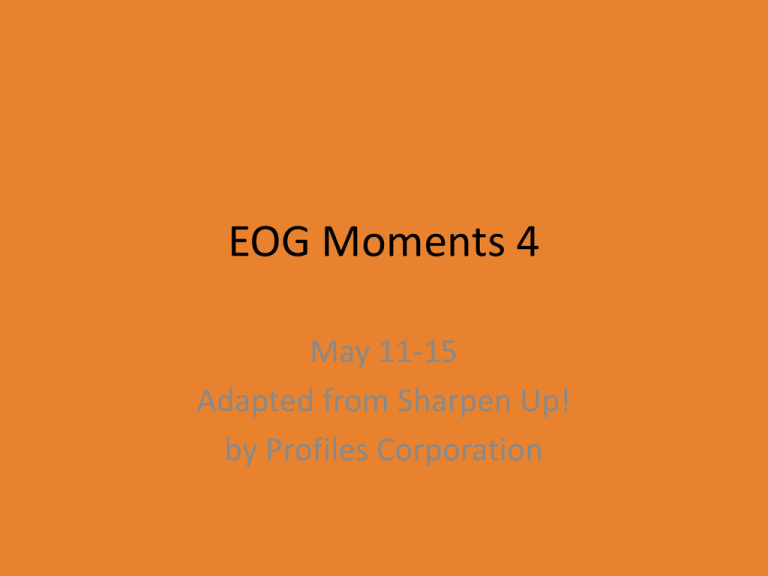
EOG Moments 4 May 11-15 Adapted from Sharpen Up! by Profiles Corporation Monday 5/11 Evaluating a text for the author’s viewpoint is an important skill. With anyone allowed to post to the internet these days, it is important to be able to determine WHY an author is writing and HOW he/she feels about the topic. Many EOG questions target this skill. Read A World Made Beautiful by Dzine by Red Gomez. 1. What is the author’s attitude toward Dzine? 2. How does the writer mainly view Dzine? a. As a vandal who paints graffiti on public buildings b. As a talented young artist with good business sense c. As the gifted createor of the graffiti art movement in Chicago d. As a wealthy artist who has forgotten his childhood community How do you know what to rule out? Look back at your answer to #1. Writer’s use different techniques to influence their readers. Humor can mean a positive attitude, but sarcastic humor can show negative feelings. 3. What technique does the writer use to show his attitude toward his subject? a. He adds tension by describing conflict between Carlos and Carlos’s mother. b. He adds humor with funny stories about DZine’s painting experiences. c. He show character development by describing changes in Dzine’s life. d. He uses an emotional plea to persuade the reader that graffiti is good. Authors sometimes use words printed in special ways to create a certain effect. What might be the author’s purpose in using these techniques? 4. Italics 5. Footnotes1 6. “…ellipses (a series of dots) before or after a quotation…” 7. Spacing…between…words 8. ALL CAPS 9. What is the main purpose of the subheadings in the passage? a. To highlight names of important people b. To explain important influences in Dzine’s life c. To place events of Dzine’s life in chronological order d. to interest the reader in the paragraphs that follow 10. What is the author’s purpose for writing this article? Often where the selection is published can give you clues to the author’s attitude. If it’s a political pamphlet to help get someone elected, the author is probably going to have a positive view of anything the candidate supports. 11.Where would this article most likely appear? a. In a magazine b. In a history textbook c. On an editorial page d. In a journal Tuesday 5/12 Using the same article we read yesterday, answer the following questions. 3. How does the write capture the reader’s 1. Which word best describes the interest at the beginning of author’s attitude toward DZine? the passage? a. Pity b. Tolerance c. Irritation d. Admiration 2. What is the purpose of the footnotes? a. b. c. d. To define unfamiliar words To add historical information To tell the source of a quotation To direct readers to other resources 4. What information would most help a reader to understand this passage? a. b. c. d. An explanation of the meaning of “hip-hop” A background in advertising Knowledge of life in Carlos’ childhood neighborhood Understanding how collectives share profits Wednesday 5/13 • Read In Grandma’s House and answer the questions in your daybook. Thursday 5/14 Read Take Heart: Catch a Mouse, Don’t Kill One and answer the following questions in your daybook. 1. Why is it important to place the bait inside the cage before you set the door on the trap? 2. If you don’t follow the direction carefully, all of the following might happen except which one? a. Your hand might get slammed by the closing cage door. b. You might lose a spring or screw from the door of the cage. c. The animal might escape from the cage after eating the bait. d. The mouse won’t be able to enter the cage. 3. What should you do just before you set the spring on the cage? 4. What is the author’s attitude toward mice? 5. What does the word “nuisance” mean in paragraph 1? How do you know? Friday 5/15
